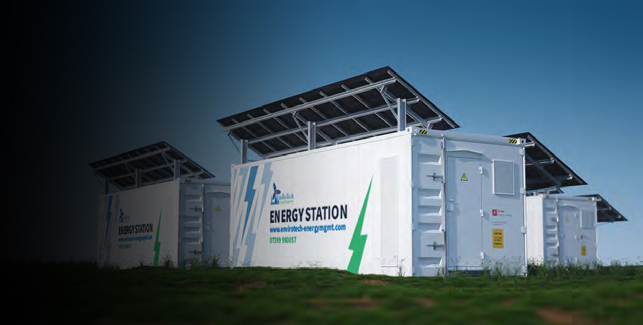The installation of an innovative “Energy Station” is helping GRAHAM to reduce its carbon footprint and manage power demands more efficiently at Eton College.
In the summer, GRAHAM was appointed to complete the Eton Sports and Aquatic Centre (ESAC), the first phase of the college’s capital development scheme to improve indoor sports facilities for its 1,300 pupils. Local schools and community groups will also benefit from, and be inspired by, the state-of -the-art sporting and training environment. A 78-week construction programme commenced in July 2020 and will see the creation of a 25m indoor swimming pool with diving facilities and a moveable floor, a multi-sports hall, as well as spectator and changing facilities.
The college, which is a preeminent Windsor-based boarding school for boys aged 13 to 18, is renowned for its forward-thinking approach. Across its vast estate, the school has invested in sustainable features and measures. For example, a ground source heat pump was installed at Bekynton which provides sustainable heating to the Jafar Gallery and Hall, Elliott Schools, Lyttelton Schools and Birley Schools. Additionally, photovoltaic (PV) panels, which adorn the distinctive parallelogram roof at the existing Queen’s Schools campus, generate much of its power requirements.
This approach is embedded into the plans for the ESAC, with provision made for natural ventilation and PV cells on the sports hall’s roof. Notably, a combined heat and power plant is also a key feature.

‘Green credentials’
Demonstrating its own “green credentials”, GRAHAM has partnered with renewable energy specialists, EnviroTech Energy Management, to devise a bespoke energy management plan that aligns the construction programme with Eton’s environmental ethos. Among the principal priorities was access to a viable alternative energy source, and a solution was identified in the installation of an EnviroTech Energy Station. From the outside, its appearance is similar in size and scale to a shipping container - the mainstays of construction sites across the country. In contrast, the interior is much more than a storage area. Lined with reflective metallic insulation, it houses complex, integrated components that harness and streamline energy production.
The benefits are enormous.
Principally, the energy station provides an uninterrupted, continuous power supply to the site, with the capacity to flexibly meet variations in demand. And no generators are required to make up for any potential shortfalls in the permanent supply required for running the site. This significantly reduces the carbon footprint and emissions.
With that, there are zero diesel costs, and noise levels are also considerably reduced to support the aims of considerate construction in the local community. It is estimated that cost savings of around 35% are achieved from the utilisation of the night-time off-peak tariff, plus the associated savings in generator hire, fuel and maintenance costs.
GRAHAM Senior Project Manager, Neil Douglas, is delighted with the performance of the Energy Station so far and he is confident that, upon project completion, the cumulative outputs will be meaningful. He said:
“At GRAHAM, we have aligned our sustainability agenda with the UN Sustainable Development Goals and Goal 13, Climate Action, is all about promoting developments in cleaner energy. We are motivated to adopt and promote sustainable energy technologies, which is a core reason why we partnered with EnviroTech to introduce the Energy Station to our operations at Eton College. Of course, we also recognise the emphasis the college places on environmental performance.
“The Energy Station has delivered more than just a reliable, consistent energy source. It also allows us to seamlessly ramp up and down our energy requirements based on the demands of a particular day. The benefits are clear to see and are making our lives easier. Noise has been significantly reduced in comparison to previous construction sites I have been responsible for, while the reduced air pollution is a real advantage. I am excited to see the compiled data and metrics, and the positive environmental impact, that will be recorded at the end of the programme."


